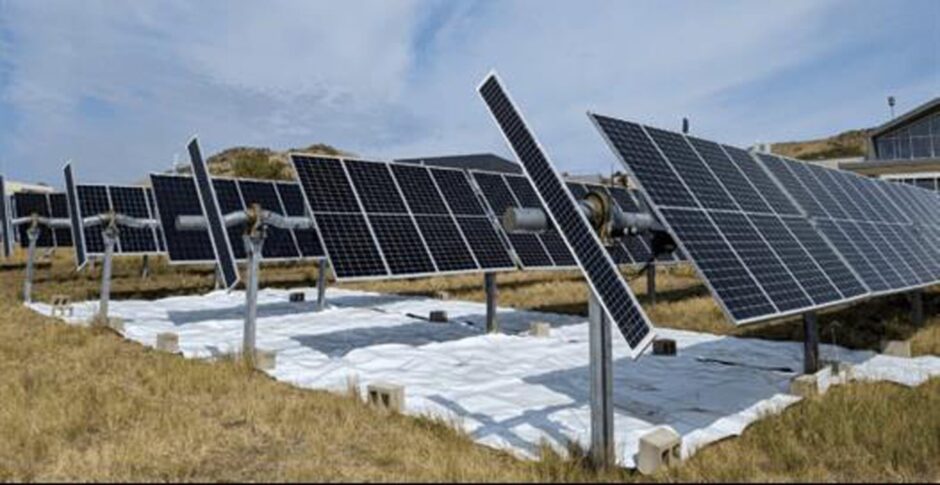
Decades ago, householders in temperate or cold countries were told that, by placing simple aluminium foil reflectors behind the central heating radiators in their homes, rooms would be warmer.
Why? Because much less thermal energy would be absorbed by areas of the wall immediately behind each panel when the heating was on. The foil would reflect much of that lost energy outwards.
The net result is that heating costs could be usefully reduced.
Now, imagine a solution just as simple to improve the useable energy delivery performance of solar panels by several percent.
Given how crucial the effective capture of solar energy is in the fight against climate change coupled with the cost-effectiveness, simplicity and growing popularity of PV panels even in cold climates, what is there to lose by trying out a similarly simple solution?
It turns out that researchers at the University of Ottawa in Canada have devised a way.
Their innovative method includes incorporating artificial ground reflectors, a simple yet powerful enhancement.
They found that, by integrating these reflectors into solar setups, they could improve the system’s energy production and efficiency, making such projects more economically viable.
This discovery is significant in the quest to develop suitable, simple energy reflectors for use with PV installations.
‘Highly reflective white surfaces can boost solar power output’
To study how reflective ground covers affect solar energy output, the University of Ottawa’s SUNLAB, led by electrical engineering Professor Karin Hinzer collaborated with the US National Renewable Energy Laboratory (NREL) in Golden, Colorado.
The study, conducted by electrical engineering doctoral candidate Mandy Lewis in Golden, found that placing reflective surfaces under solar panels can increase their energy output by up to 4.5%.
“We found that highly reflective white surfaces can boost solar power output,” says Lewis.
“Critically, these reflectors should be placed directly under the solar panels, not between rows, to maximise this benefit.”
These findings are particularly significant in Canada, where harsh snowy winters are the norm; 65% of the country’s landmass experiences snow cover for over half the year.
Bifacial solar systems (they generate from front and back surfaces), paired with high ground reflectivity, offer tremendous potential in these regions.
Additionally, given that approximately 4% of the world’s land mass is classified as sandy desert (the overall desert area is 33%), this finding has global applications too.
Discovery ‘crucial for maximising solar energy production’
According to Lewis: “This research is crucial for maximising solar energy production in geographically diverse locations.
“Furthermore, by generating more power per unit of land area, reflectors are ideal for densely populated areas, like city centres, where space limitations exist for solar installations.”
This study marks the beginning of a new international research collaboration between the University of Ottawa and NREL.
The project was funded by the National Sciences and Engineering Research Council of Canada (NSERC), Ontario Graduate Scholarships (OGS), and the US Department of Energy (DoE), underscoring the importance of collaborative efforts in advancing renewable energy technologies.
It is thought that the Ottawa/NREL research will contribute significantly to the global transition to zero-emission power sources.
These findings hold particular value for Canada and other countries that are typically cloudy, since power gains of 6.0% were observed in cloudy Seattle, Washington compared to 2.6% in arid Tucson, Arizona.
Whilst this approach to boosting PV performance is aimed at PV farms and large urban/industrial corporate rooftop arrays, the notion that domestic systems could benefit too is clearly appealing.
A cheap way of boosting power output
Thus far, most of the advances in solar power production have come from increasing the efficiency of the photovoltaic cells; the goal being to increase the watts produced per panel.
Joshua M. Pearce, professor of engineering at Michigan Technology University, at least a decade ago demonstrated that the use of mirrors, or reflectors, to further illuminate panels could increase their performance by as much as 30%.
And yet this cheap way of boosting power output from solar arrays has been slow to capture market interest.
According to Pearce, this is mainly due to concern on the part of manufacturers and their warranties. The calculation for the performance and longevity of panels is based on the assumptions of very specific energy input.
If more light is fed to the panels through a reflector, the temperature variations of the panels themselves will be greater, and the energy output is less predictable.
Pearce claimed some years ago that many manufacturers are unnecessarily concerned about this leading to potential failures.
He and his team developed what they said at the time was a reliable means of calculating the impacts via “bidirectional reflectance distribution function (BRDF)” simulations designed to calculate how light bounces off an uneven surface, and predict its dispersion.
This made it possible to calculate how light will react with all types of reflectors, even imperfect ones since reflectors do not necessarily behave like mirrors.
The model was tested in real-life conditions in Kingston, Ontario, Canada with encouraging results.
In one study, PV system efficiency was increased by 45% in a case with poorly-angled panels, and by 18% when tested with a system that had optimally-angled panels.
According to Pearce, in most cases with well-placed solar arrays, the energy collected should rise on average by 30% with the inclusion of reflectors.
EV is unaware of any similar trials in the UK.
Recommended for you
